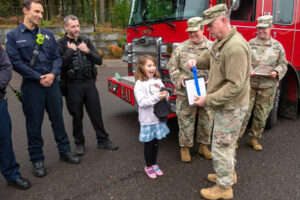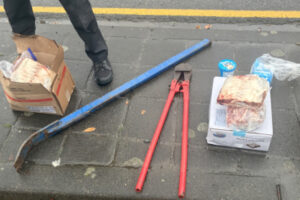The Washington State University Master Gardener Program has selected seven trees at Washougal’s Parker’s Landing Historical Park to join its Clark County Heritage Tree program, which recognizes “trees of significance” in unincorporated Clark County.
“(This recognition is) important because it gives the history there even more significance,” said Susan Tripp, the president of the Parkersville National Historic Site Advisory Committee to the Port of Camas-Washougal (PAC).
“It’s going to be helpful for promoting the history in the park and educating people about the historic families and the events that are tied to those trees. It just gives us another layer of community pride in that historical park.”
PAC members nominated the apple, cherry, and walnut trees for program consideration earlier this year.
According to the program’s website, heritage status may be granted to a single tree if it has a diameter of at least 36 inches, is located in a “special” site, has a documented age or relation to a historical event, and is an unusual species for the area; and to a grove if it is mature, contains trees that are distinctive due to size, condition, species or age, associated with a historical event, and has a relationship with a natural resource.





